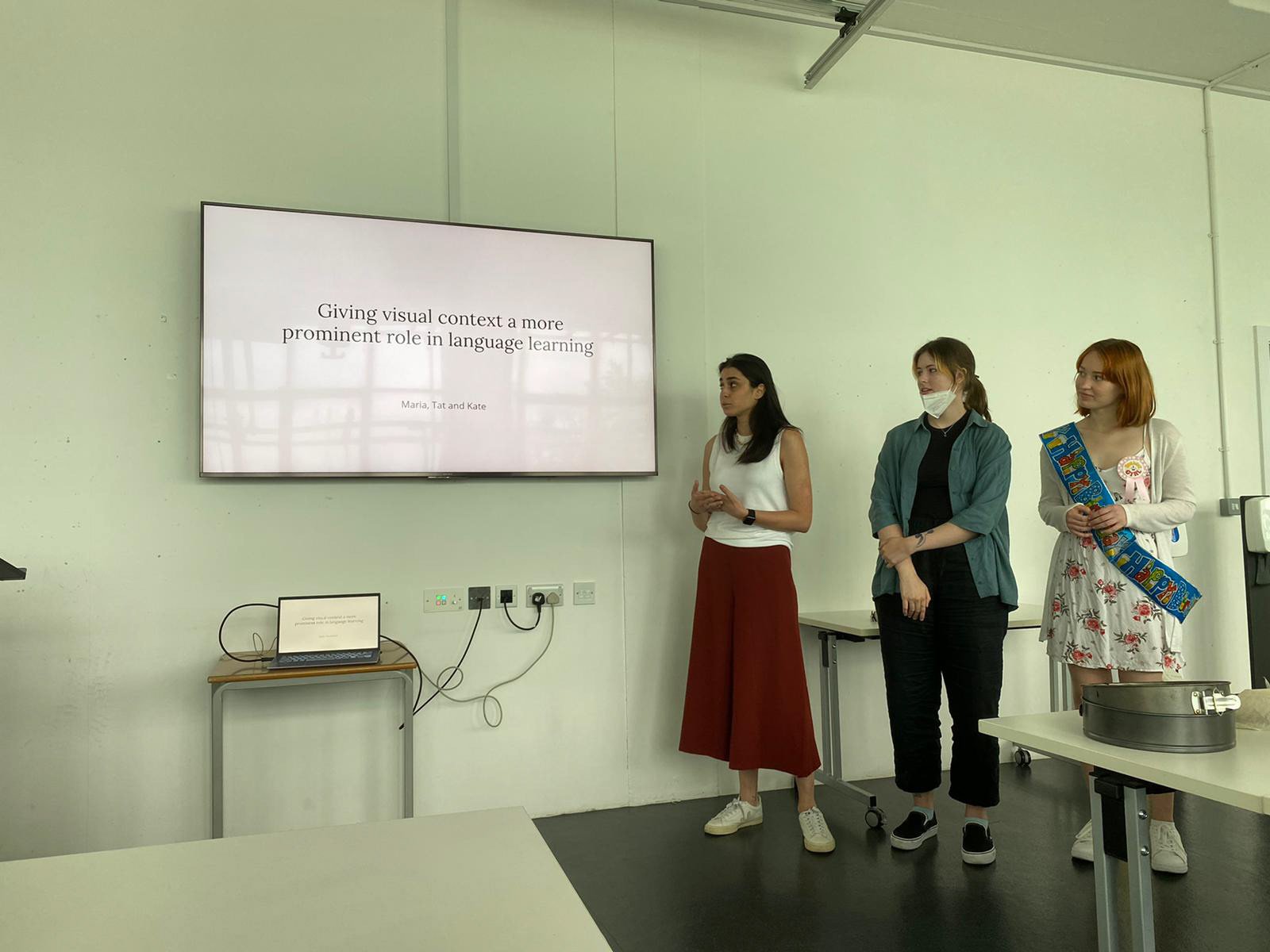02// Summer Term
Project Partners: Maria Shuttleworth and Kate Chernysheva
Throughout the summer term, we have tried to narrow down the objectives of our project. We were asked to make a short presentation of our process so far, our next steps, and the potential design outcomes that we had in mind. This for me was great exercise, no matter where we are in the process. It was beneficial for us to see where we stand, especially in a group of three where ideas might be conflicting.
Our crazy eights sessions already revealed some diverging intakes, potentially leading to a constructive outcome.
Fig 1. Crazy 8 session. Credit: Tatiana and Maria.
Kate envisioned a learning exhibition experience where people could learn languages through interacting with props that could help them remember words and phrases. This hinted Kate’s interest in exploring the physical dimension of our outcome.
Fig 2. Learning exhibition sketch. Credit: Kate Chernysheva
Maria imagined an interface with a sliding scale which increasing visual context by also increasing the amount of objects on screen. It would also have the option for people to add personalised notes for better memorisation. This confirms Maria’s strong interest in visual context, and her willingness to take it as a big part of the outcome.
Fig 3. Use of visual context for language learning. Credit: Maria Shuttleworth
As for me I envisioned a similar approach to Maria’s with an AR. It features a filtering option, showing and hiding the amount of visual elements visible according to their respective categories. On the other hand, I also envisioned a collective experience where people would be able to share their visual contents with each other. This revealed my preliminary interest in the communal aspect of the language learning process, asI believed in the importance of exchange in informal language learning.
Fig 4. A collective learning experience. Credit: Tatiana Bohsali
The feedback from our presentation was positive and insightful. Our peers were very interested in our topic, and wrote in a lot of comments and questions to think about for the next stage of our project. Some of these questions opened the doors to aspects we did not think of earlier but would be essential in our design process. This includes the evaluation our project’s success as language learning takes time, the possibility of integrating physical artifacts to our outcome or process, and the possibility of innovation and separation from current language learning experiences.
At this stage, all these ideas lack criticality and depth. Our next steps during the summer would be to embark in the secondary research, leading us to primary research. Moreover, we planned to visit a European city whose native language is unknown by most of us. For everyone’s convenience, we thought Wales was the closest and most affordable option. However, we were encouraged to explore alternatives, as Welsh is surprisingly not the most spoken language there.
Fig 5. Summer Term presentation. Credit: Sue An
Moreover, my interest in typography started to fade away slightly. I became much more fascinated by the multiple facets of the informal language learning process , and in exploring the different design possibilities that could arise from them. More importantly, I was excited about the primary research where we would have the opportunity to hear about people’s language learning journeys, and potentially design with them.
Thoughts on the term
Initially worried about our divergent areas of focus in of language learning experience, the summer term has proven that this diversity would make our collaboration richer instead. While the project may be headed towards a visual context in language learning, I believed that my interest in exploring informal learning practices through user research would be a great complement. However, we still needed to narrow down our focus for the project. The more diverse our opinions are, the broader the project scope becomes. I hope that during the summer break, we would be able to tackle desired exploration as efficiently as possible, in order to narrow our aim more thoroughly.






